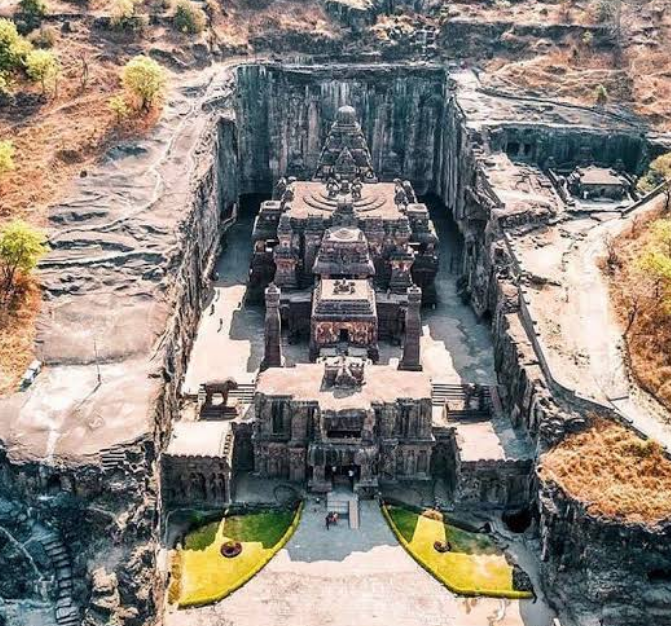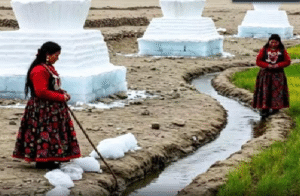Tucked into the basalt cliffs of Ellora in Maharashtra, the awe-inspiring Kailasa Temple (Kailasanatha) remains one of the most extraordinary feats of ancient Indian engineering and artistry. Carved from a single rock, this massive structure stands not just as a place of worship, but as a monument to human ingenuity, devotion, and skill.
Built in the 8th century during the reign of Rashtrakuta King Krishna I, the temple — also known as Cave 16 of the Ellora Caves complex — is widely regarded as the largest rock-cut Hindu temple in the world. The entire structure was hewn top-down from a single monolithic rock face, defying modern architectural logic.
Rising 32.6 meters (107 feet) from the courtyard below to the temple’s highest point, Kailasa Temple has earned global acclaim for its unparalleled scale, sculptural mastery, and architectural complexity.
The temple exhibits a brilliant fusion of Pallava and Chalukya architectural styles, reflecting the diverse cultural influences of ancient India. It features:
Intricate reliefs and life-sized sculptures of gods, demons, animals, and celestial beings
Grand halls and multi-storied shrines carved entirely from solid rock
A sacred courtyard surrounded by elaborately carved corridors and subsidiary shrines
Although much of the original wall painting has been lost to time, the sculptural details remain breathtaking in both scale and execution.
The Kailasa Temple is part of the larger Ellora Caves complex, a UNESCO World Heritage Site comprising 34 rock-cut temples and monasteries dedicated to Hinduism, Buddhism, and Jainism. Stretching over two kilometers, this ancient site represents a harmonious co-existence of three major Indian religions and a golden age of rock-cut architecture.
Often described by historians as the “climax of Indian rock-cut architecture,” Kailasa Temple stands as a timeless symbol of India’s cultural and artistic legacy. It continues to inspire architects, historians, artists, and pilgrims from across the globe.







